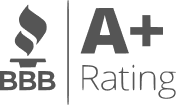Nonprofits often face significant financial hurdles, especially when it comes to securing funding through traditional avenues like bank loans or lines of credit. A common question raised by nonprofit leaders is: “Do banks lend to nonprofits?” The short answer is yes—but with critical caveats. In this article, we’ll explore the realities behind nonprofit lending, examine why traditional bank loans are difficult to obtain, and discuss alternative funding solutions that may better suit your organization.
Summary
The Banking System and Nonprofits: Misconceptions and Realities
Many nonprofit executive directors assume that having a long-standing relationship with their bank will improve their chances of being approved for a loan. This belief, while understandable, is often misguided. While banks do appreciate clients who maintain accounts with them over time—mainly because they can observe your cash flow—relationship banking alone does not typically influence loan approvals.
belief, while understandable, is often misguided. While banks do appreciate clients who maintain accounts with them over time—mainly because they can observe your cash flow—relationship banking alone does not typically influence loan approvals.
In reality, banks rely on objective, financial criteria when making lending decisions. Whether you’re a nonprofit or a for-profit business, the approval process hinges less on your relationship with the institution and more on your financial strength and risk profile.
The Three Key Lending Criteria Banks Use
When assessing a loan application from a nonprofit, banks focus on three primary areas:
1. Collateral
Collateral serves as a security measure for banks. It refers to tangible assets that the bank can claim and sell if the borrower defaults. This might include real estate like a building or a home, or any other valuable property owned by the organization.
Most nonprofits don’t possess substantial assets, which puts them at a disadvantage when applying for loans. Without collateral, the bank has no safety net, making the nonprofit a riskier borrower.
2. Personal Guarantees
In many cases, banks will require a personal guarantee from an individual with significant net worth—often someone on the board or a donor. This means that if the nonprofit defaults, the individual personally guarantees to repay the loan, giving the bank legal recourse to claim their assets.
This requirement is particularly problematic for nonprofits, as personal guarantees are hard to secure without placing an undue burden on individual stakeholders.
3. Cash Flow
Lastly, banks look at cash flow—the total gross revenue generated and how consistently it’s received. For nonprofits, this can be inconsistent due to reliance on grants, donations, and seasonal fundraising. Banks want to see a history of reliable income over several years, which many smaller nonprofits cannot demonstrate.
Why Banks Rarely Approve Loans for Small Nonprofits
Given these stringent criteria, it’s clear why most banks are hesitant to lend to small or mid-sized nonprofits. While organizations with over $10 million in annual revenue might stand a chance, even they are often approved only for lines of credit that are modest in comparison to their operational scale.
This creates a significant financing gap for the majority of nonprofits that don’t meet these thresholds.
Exploring Alternative Lending Solutions
Thankfully, nonprofits aren’t entirely out of options. There are several non-traditional lending sources designed to support mission-driven organizations without the strict requirements banks impose.
Financing Solutions: A Specialized Lender for Nonprofits
One of the most notable alternative lenders for nonprofits is Financing Solutions, the largest provider of lines of credit to small nonprofits in the U.S. Unlike banks, they do not require collateral or personal guarantees—unless fraud is involved.
Financing Solutions evaluates nonprofits based mainly on their cash flow, taking into account revenue history and overall financial health. They might also review the credit score of the executive director, primarily to screen for fraudulent activity rather than for creditworthiness.
This approach offers a lifeline to nonprofits that operate responsibly but lack the assets or wealthy backers needed to secure traditional financing.
Leveraging Board Members or Major Donors
Another potential source of funds is your own board or major donors. These individuals often have a vested interest in your organization’s success and may be willing to provide a loan.
However, over-reliance on board members or donors can raise concerns about your nonprofit’s stability. Moreover, IRS regulations limit how much these individuals can contribute or lend without receiving interest, to avoid conflicts of interest or tax issues. Legal advice is essential before proceeding with this type of arrangement.
Foundation Loans
Some private foundations offer loans to nonprofits, typically to those operating within specific sectors like education, healthcare, or community development. However, finding a foundation that lends—and one aligned with your mission—requires significant research. These programs are not widely advertised, and eligibility often depends on your geographic location or service population.
Business Credit Cards: A Risky Option
Business nonprofit credit cards are another possible avenue, though they come with major drawbacks. Most people don’t realize that these cards usually carry a personal guarantee, meaning the cardholder is responsible for the debt, not the organization.
Additionally, credit limits and cash advance amounts are typically too small to be useful for nonprofit operations, and interest rates can be prohibitive.
Community Development Financial Institutions (CDFIs)
CDFIs are mission-driven financial institutions created to serve low-income or underserved communities. Some specialize in lending to nonprofits, but like foundations, their focus is usually narrow.
CDFIs might work with nonprofits located in specific regions, serving particular demographics, or operating in industries like housing, education, or health. Finding the right CDFI for your organization involves detailed research and outreach.
Diversifying Revenue Streams: The Ultimate Strategy
Regardless of your financing strategy, the most reliable way to ensure long-term sustainability is by diversifying your revenue streams. Successful nonprofits generate income from multiple sources, such as:
- Grants
- Monthly donation programs
- Event fundraising
- Corporate sponsorships
- Major gifts
- Membership or subscription models
Diversification not only provides more financial stability but also makes your organization more attractive to potential lenders and donors.
Monthly Giving Programs: A Growing Trend
One especially effective method is converting one-time donors into monthly contributors. Studies show that these donors often give more over time, and the recurring revenue makes budgeting significantly easier. Monthly donation models have gained traction across the sector and represent a scalable, predictable funding stream.
Fundraising is the Core Mission
Many nonprofits view their primary mission as serving a cause—be it feeding the hungry, housing the homeless, or providing education. While noble, this mindset sometimes overlooks a hard truth: Fundraising is at the heart of every nonprofit’s operations.
You cannot serve your community or execute your mission without sufficient funding. That’s why it’s critical for nonprofit leaders to treat fundraising not as a peripheral activity, but as a central, ongoing function of the organization.
Building a fundraising culture—one where everyone, from the board to program staff, understands the importance of financial health—is essential for long-term impact.
Final Thoughts: Empowering Your Nonprofit to Thrive
Securing funding as a nonprofit can be daunting, especially when traditional banks impose barriers that many organizations simply cannot overcome. However, by understanding the lending landscape and exploring alternative options—like Financing Solutions, foundations, or CDFIs—nonprofits can find the resources they need to grow.
Equally important is the need to diversify revenue streams and embrace fundraising as a core component of your mission. With a proactive approach to both financing and fundraising, your nonprofit can build the resilience it needs to weather challenges and expand its impact.




